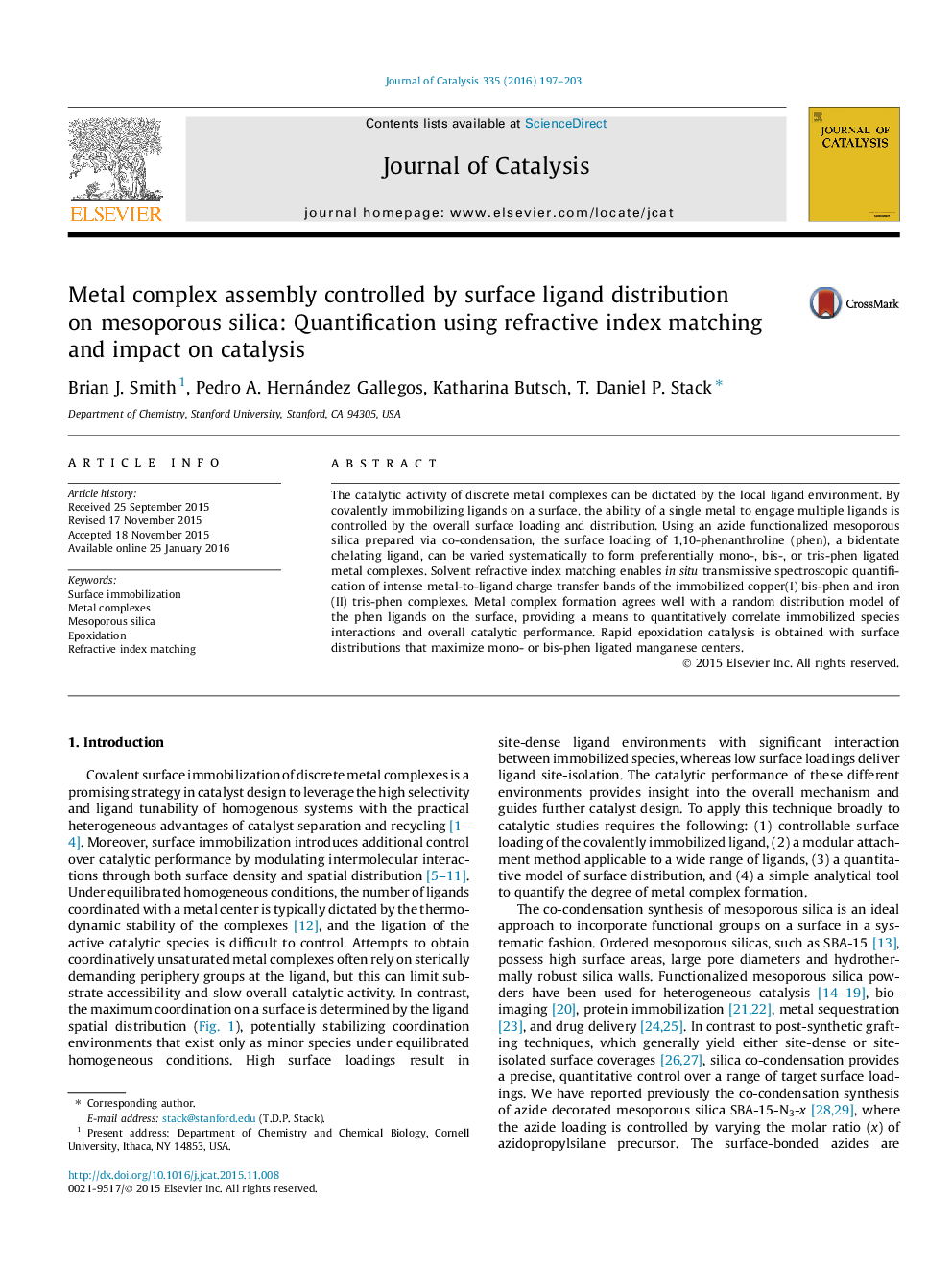| Article ID | Journal | Published Year | Pages | File Type |
|---|---|---|---|---|
| 60608 | Journal of Catalysis | 2016 | 7 Pages |
•Ligand loading on mesoporous silica is controlled by azide tether co-condensation.•UV–vis of surface bonded species made possible using refractive index matching.•Metal complex formation is controlled by the surface ligand distribution.•Surface distribution is random and fit by a generalized, quantitative model.•Catalytic epoxidation performance is correlated with surface structure.
The catalytic activity of discrete metal complexes can be dictated by the local ligand environment. By covalently immobilizing ligands on a surface, the ability of a single metal to engage multiple ligands is controlled by the overall surface loading and distribution. Using an azide functionalized mesoporous silica prepared via co-condensation, the surface loading of 1,10-phenanthroline (phen), a bidentate chelating ligand, can be varied systematically to form preferentially mono-, bis-, or tris-phen ligated metal complexes. Solvent refractive index matching enables in situ transmissive spectroscopic quantification of intense metal-to-ligand charge transfer bands of the immobilized copper(I) bis-phen and iron(II) tris-phen complexes. Metal complex formation agrees well with a random distribution model of the phen ligands on the surface, providing a means to quantitatively correlate immobilized species interactions and overall catalytic performance. Rapid epoxidation catalysis is obtained with surface distributions that maximize mono- or bis-phen ligated manganese centers.
Graphical abstractFigure optionsDownload full-size imageDownload high-quality image (92 K)Download as PowerPoint slide
